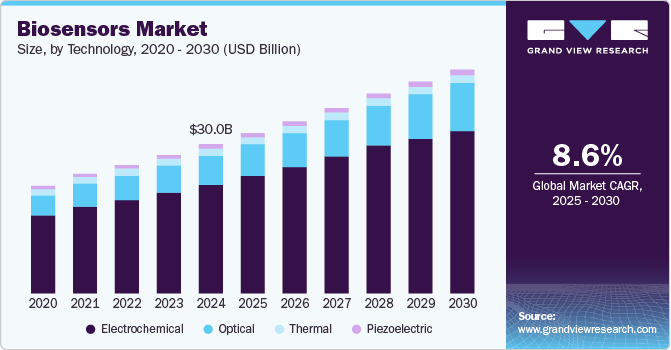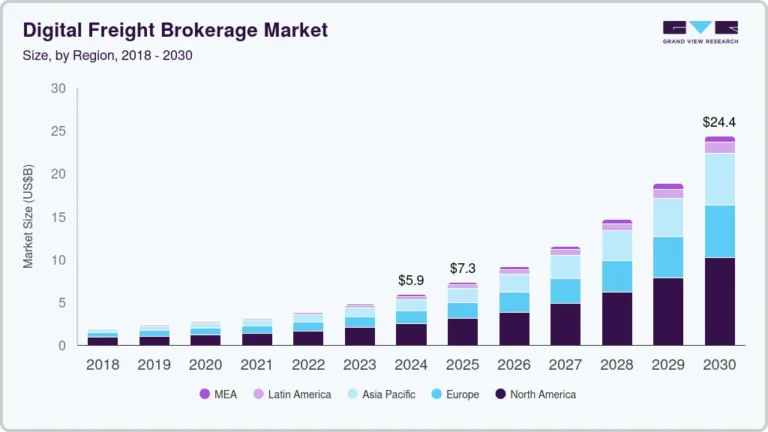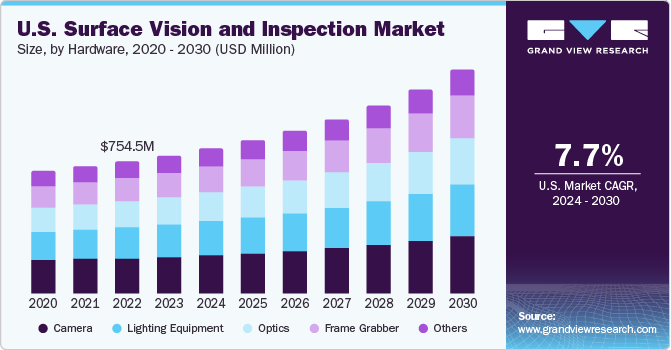Biosensors Market Size, Share & Trends Analysis growing at a compound annual growth rate (CAGR) of 8.6% from 2025 to 2030

The global biosensors market size was estimated at USD 30.0 billion in 2024 and is projected to reach USD 48.6 billion by 2030, growing at a compound annual growth rate (CAGR) of 8.6% from 2025 to 2030. The demand for biosensors is increasing due to the diversity of medical applications, increasing number of diabetic patients, high demand for compact diagnostic devices, and rapid technological improvement.
Key Market Trends & Insights
- North America held the largest share of more than 40.2% of the revenue in 2024.
- Asia Pacific is expected to witness the fastest CAGR of 9.9% from 2025 to 2030.
- Based on technology, the electrochemical segment captured the largest market share of around 71.7% in 2024.
- In terms of applications, in 2024, the medical segment dominated the industry and accounted for around 66.8% of the total revenue share.
- Based on end-user, biosensors in point-of-care testing led the market in 2024 accounting for a revenue share of 47.9%.
Market Size & Forecast
- 2024 Market Size: USD 30.0 billion
- 2030 Projected Market Size: USD 48.6 billion
- CAGR (2025-2030): 8.6%
- North America: Largest market in 2024
- Asia Pacific: Fastest growing market
Request a free sample copy or view report summary: https://www.grandviewresearch.com/industry-analysis/biosensors-market/request/rs1
Accurate early diagnosis of the disease is critical to a positive disease prognosis and patient survival. Demand for disposable, convenient, and economical devices with fast response times has increased dramatically in recent years. The emergence of COVID-19 had a positive impact on the medical device industry. Early symptoms of COVID-19 were scanned using a variety of methods. The biosensors market is on the verge of substantial expansion, driven by noteworthy technological advancements and strategic endeavors by key market players. For instance, in January 2023, Intricon, a developer and manufacturer of medical devices leveraging smart miniaturized electronics, made a significant stride by inaugurating a Biosensors Center of Excellence (CoE).
This strategic move highlights Intricon’s commitment to integrating its expertise and capabilities in a vertically integrated business unit devoted to introducing biosensor devices to the medical market. Combining technological innovation with a specific focus drives positive growth in the biosensors market.
Nanotechnology-based biosensors are expected to have wide application scope in various industries, such as food analysis, imaging, and microbial activity monitoring. The global market is consolidating due to the growing preference for non-invasive biosensors, rising popularity of medical devices & specialty drugs, and increasing research collaborations & contracts between various manufacturers. For example, Ethicon Endo-Surgery Inc.under contracts administered by Johnson & Johnson Innovation. Another important factor boostingindustry growth is the rising awareness about continuous health monitoring. As a result, the interest of athletes is increasing. Many athletes use Electromyography (EMG) biosensors to keep a close eye on their health and get alerts if something goes wrong.
This early detection can help athletes perform better and stay ahead of their competition. For example, in December 2022, biosensor company Nix launched its first consumer product, Nix Hydration Biosensor. The Hydration Nix Biosensor consists of a Bluetooth-enabled reusable module, a mobile app, and a single-use patch.Despite these considerations, the global market is expected to be constrained by strict regulations and complex cost recovery policies in the global healthcare sector. In addition, existing regulations are slow to adapt to new technologies, hindering product adoption and limiting industry development. The global biosensors market growth is projected to be driven by government programmes focused on the development of proteomics and genomics.
National Information and Communication Technology Australia (NICTA), for example, is projected to expand its data mining, networks, and embedded systems research in this subject. The majority of IT firms are also heavily investing in this sector. Market growth is also driven by investments from major IT companies, such as IBM, Infosys, and TCS. Furthermore, the Chinese government is heavily investing in its computing infrastructure, primarily through the China Grid, which was launched by the Chinese Academy of Sciences, the Ministry of Education, and the China National Grid (CNGrid), supported by the Ministry of Science & Technology. The presence of such beneficial initiatives is projected to boost the market growth.
However, the biosensors market encounters significant challenges, including the necessity for developing compatible single-task tools alongside existing software. The market growth is hindered by a substantial volume of data lacking standardization, impeding seamless integration. There is a crucial demand for user-friendly databases to streamline the analysis of extensive data held by institutions and governments globally, reducing both effort and time.
Market Concentration & Characteristics
Biosensors have made rapid advances in the medical field due to their ability to meet various criteria through a combination of interdisciplinary approaches in chemistry, nanotechnology, and medicine. The market growth is influenced by a number of factors that affect industry dynamics in both positive and negative ways. Furthermore, consumers are being urged to use biosensors for regular detection of pathogenic activities in the body due to the prevalence of chronic and lifestyle-related ailments, which is projected to drive product demand.






